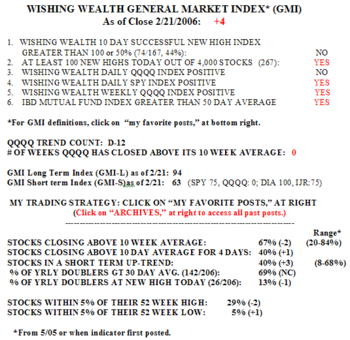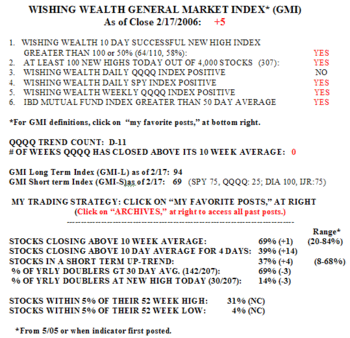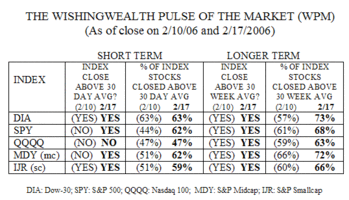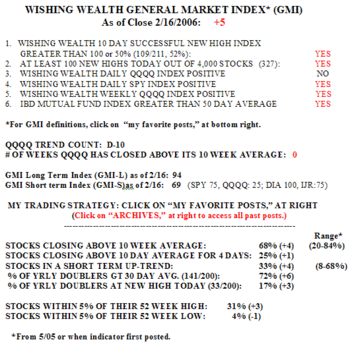The GMI feel to +4, with only 74 (44%) successful 10 day new highs. Stocks that hit a new high 10 days ago are unlikely to have closed Tuesday above where they closed 10 days earlier.  The QQQQ is looking very weak. Only 15% of the Nasdaq 100 stocks advanced on Tuesday, along with 35% of the S&P 500 stocks and 33% of the Dow 30 stocks. The QQQQ fell below its 10 day average and all short term indciaotrs are negative. The GMI-S therefore fell to 63%. The striking divergence between the QQQQ and the otehr indexes will need to be corrected soon. At some point these market indexes will come into synch with each other. Time to short the QQQQ? IBD Meetup tonight.
The QQQQ is looking very weak. Only 15% of the Nasdaq 100 stocks advanced on Tuesday, along with 35% of the S&P 500 stocks and 33% of the Dow 30 stocks. The QQQQ fell below its 10 day average and all short term indciaotrs are negative. The GMI-S therefore fell to 63%. The striking divergence between the QQQQ and the otehr indexes will need to be corrected soon. At some point these market indexes will come into synch with each other. Time to short the QQQQ? IBD Meetup tonight.
Please send your comments to: silentknight@wishingwealthblog.com.


